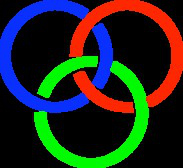Orateur
Dr
jimmy rotureau
(Chalmers University)
Description
Systems with large scattering length $a_2$ are of particular interest since they exhibit universal properties when particle momenta are small compared to $1/r_0$ with $r_0$ being the range of the interaction. This situation occurs for instance, in nuclear physics where the two-nucleon system has two S-wave channels where $a_2 >>r_0$. Using the principles of the pionless Effective Field Theory (EFT), two-nucleon and three-nucleon interactions can be constructed as controllable series of contact interactions with an increasing number of derivatives. The many-body dynamics of few-nucleon systems can then be described by solving the Schrödinger equation with the No Core Shell Model formalism.
In [1] we described few-fermion systems trapped within a harmonic oscillator potential characterized by the frequency $\omega$ and interacting with EFT potentials constructed up to Next-to-Next-to-Leading-Order($N^²LO$).
In [2] using the same method, we haved considered trapped few-nucleon systems : in that case, the trap is just an artefact allowing us to fix the coupling constants in the EFT expansion and eventually, the trap needs to be removed. During my presentation, I will show results for the three-nucleon and four-nucleon systems as the frequency $\omega$ of trap approaches zero.
The nuclei located in the vicinity of drip-lines have very different properties from the well-bound systems in the valley of stability. Typical examples of such peculiar features are for instance, the appearance of halo configuration and the presence of strong couplings to the continuum.
In a second part of my talk, I will present a description of the halo nucleus 6He, as a three-body system with interactions constructed using the halo-EFT formalism. The three-body dynamics is solved using the Gamow Shell Model which is a shell model approach where the coupling to the continuum is explicitely taken into account.
[1] J. Rotureau, I. Stetcu, B. R. Barrett, M. C. Birse, and U. van Kolck , Phys. Rev. A 82, 032711 (2010)
[2] J. Rotureau, I. Stetcu, B. R. Barrett and U. van Kolck , in preparation
Auteur
Dr
jimmy rotureau
(Chalmers University)

